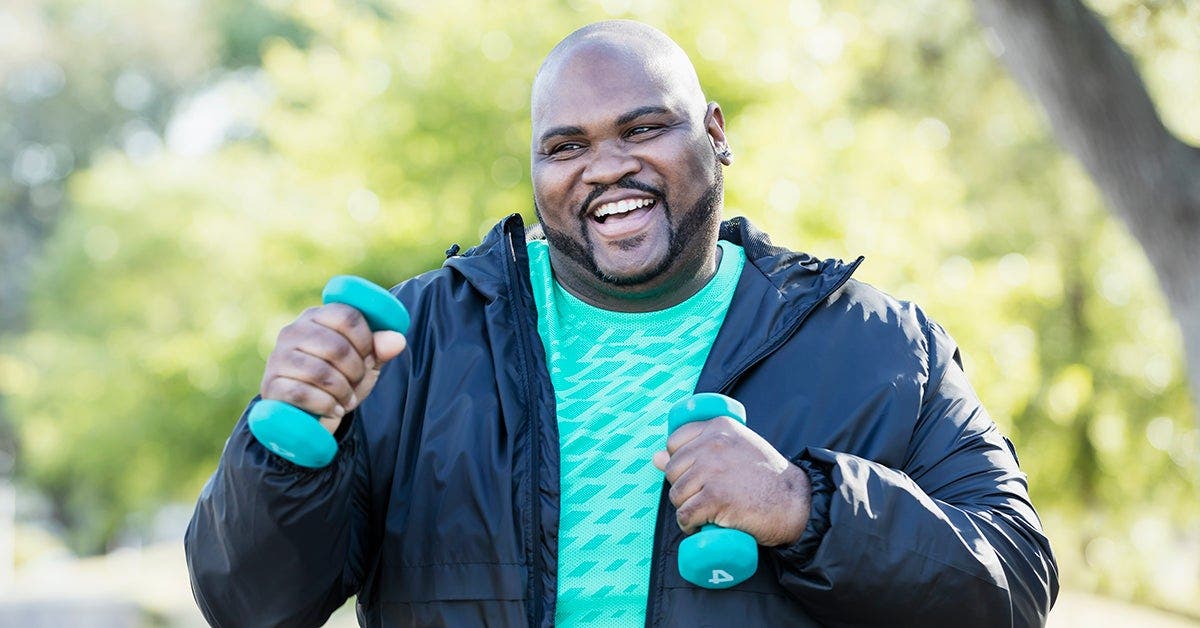5 ways to power up when your workouts become too easy


Remember when you first started exercising? Getting into a groove may not have been easy, but you did it! Now the trick is knowing when—and how—to take your workouts to the next level.
“Most people stay with what they did for the first few months because it worked well,” says Rick Richey, a National Academy of Sports Medicine trainer and the owner of Independent Training Spot in New York City. “But it’s the body’s job to adapt to stress”—whether you’re regularly walking a few miles or lifting weights—“and if the stressors don’t change over time, you’ll end up plateauing.”
To avoid the fitness flat line and continue getting stronger, you need to occasionally kick things up a notch. Here, top trainers share simple ways to do it.
Are you ready for a new workout challenge?
The optimal time to dial up your fitness plan isn’t always obvious. A good rule of thumb: If you’ve been following the same workout routine for two or more months—and you can pretty much cruise through your sessions on autopilot now—your plan could probably benefit from a push, Richey says.
Your perceived effort during workouts can also signal that it’s time for a boost: Once your activity of choice starts to feel easy, your body is likely ready for a new challenge. “That may mean anything from feeling like you could do more reps to realizing you could run another half mile at the end of your session,” says Adam Rosante, a strength and nutrition coach based in Amagansett, New York.
Finally, don’t discount the cyclical effect of boredom. People who enjoy exercise push themselves harder, according to a study published in the Scandinavian Journal of Medicine and Science in Sports. If you’re no longer feeling engaged in your sessions, a fresh challenge could help you plug back in and continue making progress.
5 ways to make workouts more challenging
No matter what your go-to activity is, these simple strategies can help you step it up.
1. Set a specific goal
Working toward a new fitness milestone can motivate you to push harder, and provide a framework for doing so, Rosante says. Start by identifying what you want to go after—such as finishing a 10K, hitting a new daily step count, or completing a plank challenge—then hash out a game plan to get there. For guidance, search online for walking and running training plans, as well as step-by-step progressions for pull-ups and planks.
2. Make incremental increases
“Try increasing your current workout intensity by just 5 to 10 percent,” Richey advises. Significant yet doable is the goal: “You don’t want to go so low that you’re not proud of what you accomplish, but you also want to be able to accomplish what you set out to do.” For instance, if your favorite walking loop is 3 miles, try tacking on another quarter mile. Usually finish your running route in 30 minutes? Aim to shave 90 seconds off your time. And for strength training, grab slightly heavier weights or a stronger resistance band.
3. Switch up the tempo
“One of the most underused workout variables is tempo, or how fast you perform an exercise,” Richey says. When strength training, for example, switching it up can increase how much your muscles work during either the eccentric (lowering part) of an exercise or the concentric (lifting) portion, he explains. During your next strength workout, try taking 5 seconds to lower the weight and 1 second to lift it. This increases the time muscles spend working against the resistance of the weight (as well as gravity), upping the challenge of any strength session—it’s a game changer.
You can also alter your tempo during cardio exercise. “If you always move at the same pace, add speed intervals; and if you’ve been doing intervals, try doing a longer, slower-paced session to challenge your endurance,” says Don Saladino, a National Academy of Sports Medicine-certified personal trainer and owner of Drive495 in New York City. To add intervals, move as fast as you can for 30 to 60 seconds, go at your comfy pace for 2 to 3 minutes, and repeat. Or use landmarks (such as stop signs and utility poles) as alternating cues to crank it up, then catch your breath.
4. Do something different
Here’s a way to increase the challenge for your muscles and your mind: Try a new activity, Saladino says. No need to do a total 180—in fact, choosing something similar to your go-to workout can help you build on your progress while layering in variety. For example, if you’re a Zumba enthusiast, try a hip-hop or salsa class; if you train with kettlebells, use dumbbells for a session. Run or walk every day? Swap out one of those sessions for a bike ride, or hop on the elliptical. “And don’t underestimate the value of getting outside and playing,” Rosante says. Romping with kids, friends, or the family pet counts toward your physical activity, too.
5. Add one extra workout
Prefer to stick with the workouts you know and love? Try doing them more often. If you’ve been pedaling through Peloton rides four days a week, aim for five; if you take a hike every Saturday, try adding a trek midweek. Increasing the volume of your exercise schedule is an effective way to up the challenge without making other changes to your routine, Rosante says.
Self-monitor for your sweet spot
A challenging workout should tire you out but not leave you so sore you can’t move afterward (or worse, cause injury). “If you feel stronger in your body and your energy levels are rising, those are good signs,” Rosante says. On the flip side, serious fatigue or soreness, considerable appetite changes, and new sleep issues may be signs you’re overdoing it and need to scale back to a more sustainable level.
Your progress can be a reliable marker of a just-right challenge level, too. A few weeks into a program, you should be able to go faster and farther with less effort, and the final reps of your strength sets should start to feel more doable, Saladino says. Before you know it, you’ll be ready to increase the challenge again!
--
Amy Schlinger is a National Academy of Sports Medicine–certified personal trainer. She has more than 11 years of experience writing about health, fitness, nutrition, and lifestyle topics.
--
This article was reviewed for accuracy in July 2021 by Christi Smith, MS, CSCS, associate manager for science translation at WW. The WW Science Team is a dedicated group of experts who ensure all our solutions are rooted in the best possible research.
